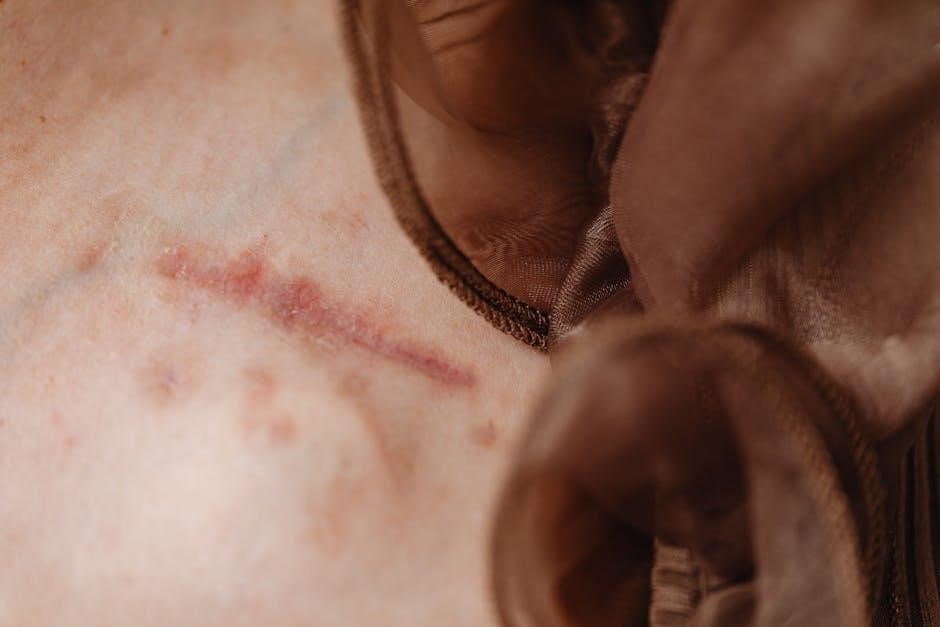guided tissue regeneration vs bone graft
Guided tissue regeneration and bone graft are dental procedures used to regenerate lost tissue and bone, utilizing barrier membranes to direct growth, as seen in various clinical studies and research papers online today naturally.
Definition and Purpose of Guided Tissue Regeneration and Bone Graft
Guided tissue regeneration and bone graft are defined as dental surgical procedures that aim to regenerate lost tissue and bone, utilizing barrier membranes to direct growth. The purpose of these procedures is to restore the natural architecture of the teeth and surrounding tissues, ensuring proper function and aesthetics.
These procedures involve the use of biocompatible membranes that keep out tissue and allow the bone to grow, thereby promoting the regeneration of new bone and gingival tissue. The ultimate goal of guided tissue regeneration and bone graft is to create a stable and healthy environment for dental implants or other restorative procedures.
The definition and purpose of guided tissue regeneration and bone graft are closely related to the overall objective of achieving optimal oral health and function, as evident from various clinical studies and research papers online today.

Guided Bone Regeneration Techniques
Guided bone regeneration techniques involve using membranes and bone grafts to regenerate bone, promoting new growth and development naturally every time online.
Application of Guided Bone Regeneration in Dental Surgery
The application of guided bone regeneration in dental surgery is a significant aspect of modern dentistry, allowing for the reconstruction of damaged or missing bone tissue. This technique is particularly useful in cases where implants are to be placed, as it enables the creation of a stable and sufficient bone foundation. Guided bone regeneration involves the use of barrier membranes and bone grafts to direct the growth of new bone tissue, promoting a successful implant placement. The procedure is typically performed under local anesthesia and may involve a combination of surgical techniques, including the use of resorbable membranes and bone substitutes. By applying guided bone regeneration in dental surgery, clinicians can achieve predictable and successful outcomes, restoring both function and aesthetics to the patient’s mouth. The use of guided bone regeneration has become a standard approach in many dental surgical procedures, offering a reliable and effective solution for patients with bone deficiencies.

Comparison of Guided Bone Regeneration and Traditional Bone Grafting
Guided bone regeneration is compared to traditional bone grafting in terms of effectiveness and cost naturally online every day always.
Cost-Effectiveness of Guided Bone Regeneration
The cost-effectiveness of guided bone regeneration is a significant factor in its adoption, as it often requires fewer materials and can be less invasive than traditional bone grafting methods.
Generally, guided bone regeneration might be perceived as a more cost-effective option, with lower financial implications for patients and healthcare systems.
Studies have shown that guided bone regeneration can be a viable alternative to traditional bone grafting, with comparable outcomes at a lower cost, making it an attractive option for patients and dental professionals alike.
Overall, the cost-effectiveness of guided bone regeneration makes it a valuable treatment option for patients in need of dental restoration, providing a more affordable and efficient solution for bone regeneration and tissue growth.
As the field of guided bone regeneration continues to evolve, its cost-effectiveness is likely to remain a key consideration, driving innovation and improvement in treatment outcomes and patient care.

Objectives of Guided Tissue Regeneration and Bone Graft Studies
Studies aim to compare guided bone regeneration with connective tissue graft in terms of aesthetic outcomes naturally online today always.
Materials and Methods Used in Guided Tissue Regeneration and Bone Graft Research
Researchers utilize various materials and methods to conduct studies on guided tissue regeneration and bone graft, including bone grafts and biocompatible membranes.
The optimal type of bone graft material is often a key consideration in these studies, with different materials having varying effects on tissue regeneration.
Studies have enrolled patients with specific dental issues, such as single tooth gaps in the anterior maxilla and horizontal alveolar defects, to compare the outcomes of guided bone regeneration and other techniques.
A single-blind RCT is often used to compare guided bone regeneration with connective tissue graft in terms of aesthetic and patient-reported outcomes.
The use of barrier membranes is a crucial aspect of guided tissue regeneration and bone graft research, as it helps to direct the growth of new tissue and bone.
By understanding the materials and methods used in these studies, researchers can better develop and refine guided tissue regeneration and bone graft techniques to improve patient outcomes.
The selection of appropriate materials and methods is critical to the success of these studies and the development of effective treatments.

Guided Tissue Regeneration and Bone Graft in Dental Implant Placement
Guided tissue regeneration aids in preserving hard and soft tissue dimensions during dental implant placement naturally online.
Importance of Guided Tissue Regeneration in Soft Tissue Preservation
Guided tissue regeneration plays a crucial role in soft tissue preservation, as it helps to prevent resorption of the buccal plate and maintain the natural contours of the mouth. This is particularly important in cases where dental implants are being placed, as the preservation of soft tissue can greatly impact the overall aesthetic and functional outcome of the procedure. The use of barrier membranes in guided tissue regeneration helps to direct the growth of new tissue and prevent the ingress of unwanted cells, allowing for the creation of a healthy and stable environment for the implant to thrive. By preserving the soft tissue, guided tissue regeneration can help to ensure a more natural-looking and feeling result, which is essential for patient satisfaction and overall oral health. The importance of guided tissue regeneration in soft tissue preservation cannot be overstated, as it has a significant impact on the long-term success of dental implant procedures.
Latest Innovations and Strategies in Tissue Regeneration
The field of tissue regeneration is constantly evolving, with new innovations and strategies being developed to improve the outcomes of guided tissue regeneration and bone grafting procedures. One of the latest advancements is the use of biocompatible membranes that can be customized to meet the specific needs of each patient. Additionally, researchers are exploring the use of growth factors and other bioactive molecules to enhance the regeneration of tissue and bone. Another area of focus is the development of new bone graft materials that are more effective and have fewer complications. These innovations and strategies are aimed at improving the predictability and success of tissue regeneration procedures, and are expected to have a significant impact on the field of dentistry in the coming years. The use of digital technologies, such as 3D printing and computer-aided design, is also becoming more prevalent in tissue regeneration, allowing for more precise and personalized treatment plans.
